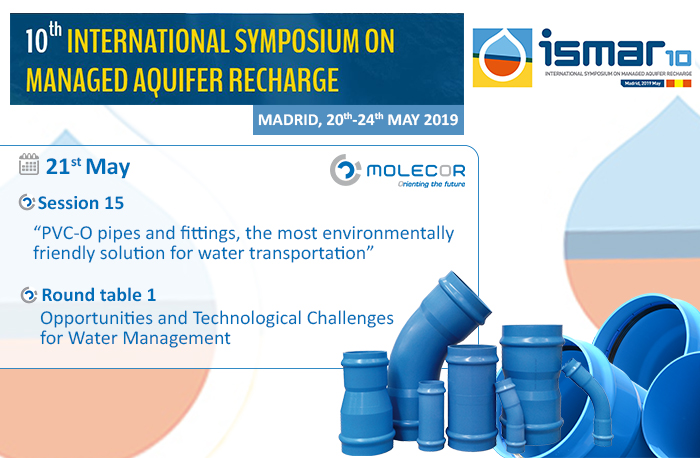Madrid, España
From 20th to 24th May 2019 Madrid will receive the principal congress on water managed aquifer recharge ISMAR10.
Organized by Tragsa Group, it has been promoted by the International Association of Hydrogeologists (IAH), the American Society of Civil Engineers (ASCE) and the United Nations Educational, Scientific and Cultural Organization (UNESCO), in addition to local organizers (Tragsa Group, Spanish Geological Survey (IGME), International Water Resources Association (IWRA GE)).
ISMAR10 aims to turn this event into the connecting point for all the agents related to the “MAR” technique defined by Peter Dillon, Weiping Wang and Enrique Fernández Escalante (Co-chairs of IAH Commission on Managing Aquifer Recharge) as: the palette of solutions to water shortage, water security, water quality decline, falling water tables and endangered groundwater dependent ecosystems.
With the celebration of this international event, ISMAR10 aims to spread this technique and its effectiveness, as well as its benefits, limitations and applicability, acquire transparency. To this end, it builds on new scientific and technological developments in water management.
Molecor, pioneer in the development of technology applied to PVC-O, Oriented PVC pipes and fittings for under-pressure networks will be present at this international event presenting the environmental advantages that offer the PVC-O pipes and fittings with the paper: “PVC-O pipes and fittings, the most environmentally friendly solution for water transportation” which will take place 21st May at session 15.
TOM® pipes and ecoFITTOM® fittings are developed with a sustainable production, respecting the environment and preventing pollution; the risks that water resources currently face due to the effects of climate change and human action.
In addition to this, with the intention of bringing together the advantages and characteristics of pipes and fittings, Molecor will participate in round table, which will take place the same day, about Opportunities and Technological Challenges for Water Management”







